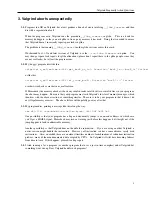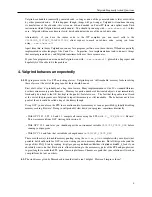
DHAT: a dynamic heap analysis tool
--show-top-n=<number> [default:
10]
At the end of the run, DHAT sorts the accumulated allocation points according to some metric, and shows the highest
scoring entries.
--show-top-n
controls how many entries are shown.
The default of 10 is quite small.
For
realistic applications you will probably need to set it much higher, at least several hundred.
--sort-by=<string> [default:
max-bytes-live]
At the end of the run, DHAT sorts the accumulated allocation points according to some metric, and shows the highest
scoring entries.
--sort-by
selects the metric used for sorting:
max-bytes-live
maximum live bytes [default]
tot-bytes-allocd
total allocation (turnover)
max-blocks-live
maximum live blocks
This controls the order in which allocation points are displayed. You can choose to look at allocation points with the
highest maximum liveness, or the highest total turnover, or by the highest number of live blocks. These give usefully
different pictures of program behaviour. For example, sorting by maximum live blocks tends to show up allocation
points creating large numbers of small objects.
One important point to note is that each allocation stack counts as a seperate allocation point.
Because stacks by
default have 12 frames, this tends to spread data out over multiple allocation points. You may want to use the flag
--num-callers=4 or some such small number, to reduce the spreading.
154
Содержание BBV
Страница 176: ...Valgrind FAQ Release 3 8 0 10 August 2012 Copyright 2000 2012 Valgrind Developers Email valgrind valgrind org ...
Страница 177: ...Valgrind FAQ Table of Contents Valgrind Frequently Asked Questions 1 ii ...
Страница 302: ...README mips based on newer GCC versions if possible 95 ...
Страница 303: ...GNU Licenses ...
Страница 304: ...GNU Licenses Table of Contents 1 The GNU General Public License 1 2 The GNU Free Documentation License 8 ii ...
















































